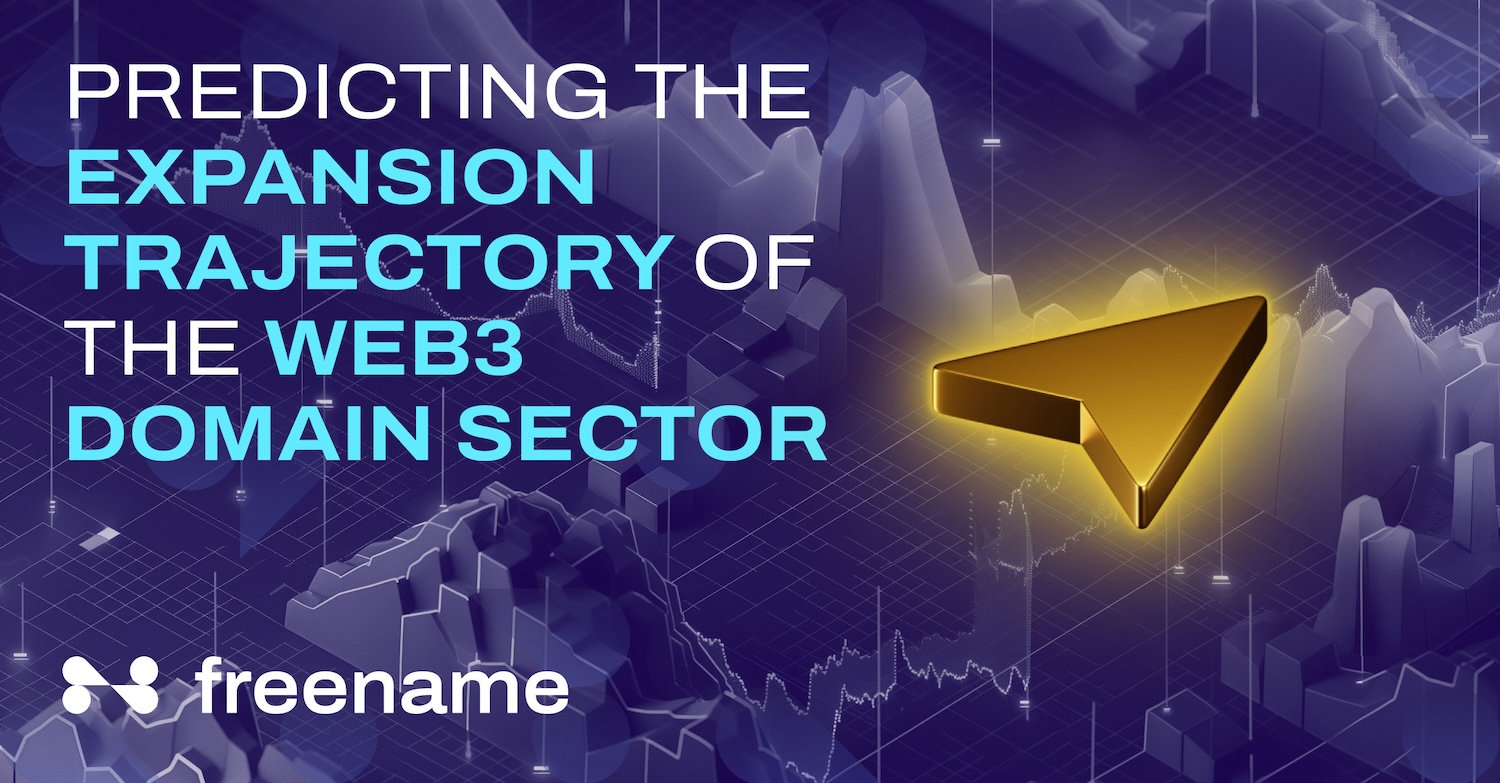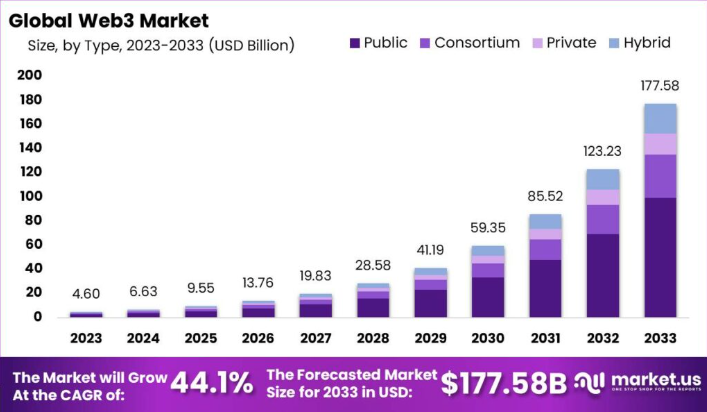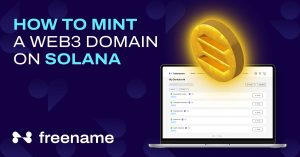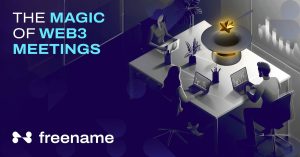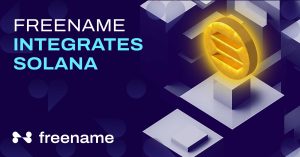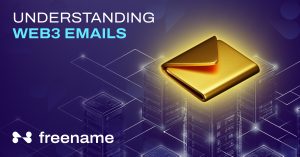The internet is evolving rapidly, and leading the way is Web3. In Web3, you control your data, and the community, not tech giants, sets the rules. This isn’t just a tech dream; it’s the future of the internet.
So, why does this matter to you? If you’re an investor, developer, or businessperson, the expanding Web3 domain industry is your ticket to this exciting new era.
Let’s explore what’s generating all the buzz and where we expect Web3 to go in the coming years.
Understanding Web3 Domains
Imagine having a space that is totally yours and free of all obligations on the internet. That is the impact Web3 domains provide. And because they are built on the blockchain, they can release themselves from the constraints of centralised censorship and hand over all control to you.
While Web2 comes with the risk of censorship and confiscation, with Web3 domains, your websites are practically untouchable. Much more, they come with an increased sense of security and autonomy, give us control over our personal data, address many of the privacy concerns associated with Web2, and also facilitate seamless integration with blockchain services.
And they’re not just for show; they double as your online alias, your wallet address, and so much more. So you can use them to receive cryptocurrency, access various dApps, and build decentralized websites. So, this isn’t just a new type of domain; it’s a complete paradigm shift.
Read Also: Differences Between Centralization And Decentralization
Current State of the Web3 Industry
Though it’s still in its infancy, the Web3 sector has grown and innovated remarkably. Fundamentally, Web3 wants to build a decentralized internet that allows users to own their data and digital assets. At a cumulative annual growth rate (CAGR) of 43.7%, the global Web3 market is expected to reach $81.5 billion by 2030, up from its estimated $3.2 billion in 2021.
Key Players and Stakeholders
Leading the Web3 industry’s expansion are:
- Blockchain platforms like Polkadot, and Binance Smart Chain, which supply the infrastructure that Web3 development needs.
- Companies like Freename that are focused on creating and managing Web3 domains in a way that makes it easier for users to secure their digital identities.
- Venture capital firms that are also heavily funding Web3 initiatives and speculating positively about their future success.
- Early adopters that are working on new use cases and pushing the scope of what’s feasible
- Developers who are also creating creative dApps and services that use Web3 domains.
- Other noteworthy stakeholders that range from decentralized finance (DeFi) platforms to NFT marketplaces and big IT firms like IBM and Oracle, which are making significant Web3 infrastructure investments.
Adoption Rates and Trends
Web3’s adoption is on the rise, and at the heart of this revolution are Web3 domains, which have seen a dramatic uptick in registrations. Unstoppable Domains, a key player, reported over 3.1 million domains at the end of 2022, with 1.2 million registered in that year alone.
The momentum is just mounting as big brands and businesses integrate Web3 into their daily operations. Significantly, in 2023, Polygon overtook Ethereum and is now home to 41% of blockchain projects.
The younger generations are driving the Web3 domain demand; 48% of millennials and 51% of Gen Z expect to work in the Metaverse in the near future. This generational shift signals a robust future for Web3 domains and applications as they become integral to our digital lives.
Factors Driving the Growth of Web3 Domains
Technological Advancements
The expansion of Web3 domains is mostly being driven by technical developments. Through speed increases and cost reductions, layer 2 scaling solutions such are boosting accessibility to Web3 sites.
Zero-knowledge proofs (ZKPs) and cross-chain interoperability protocols like Polkadot and Cosmos facilitate communication between blockchain networks, which increases the usefulness of Web3 domains. These technologies elevate privacy and security, which are crucial components of decentralized identity systems. The capabilities and acceptance of Web3 domains also get better with developments in smart contracts and their connection with decentralized apps (dApps).
Increasing Adoption of Blockchain Technology
The growing use of blockchain technology and data tokenization in several sectors is driving Web3 domain growth. We have more industries, from finance and healthcare to supply chains and entertainment, embracing blockchain technology. This cross-industry adoption is helping to legitimize Web3 domains and encourage more users to consider their utilities.
Rising Interest from Investors and Developers
Just like we explained earlier, investors are now more interested in the Web3 space thanks to its high growth potential and its scores of applications. As a result of the innovation and development this financial inflow is fostering, the Web3 domain market is expanding more quickly.
The capacity to create and implement decentralized apps independent of central authorities is enticing developers as well. More developers are expected to join the market, therefore new Web3 domain-leveraging tools, platforms, and services will undoubtedly proliferate.
| You can become an investor and a pioneer in the Web3 domains industry in a few click! Purchase a Web3 domain on Freename and become a reseller to earn royalties on every domain registered under your TLD. You can receive up to 50% of the total registration fees, automatically distributed to your wallet through the Freename.net system. Learn more and start your Web3 domain journey with Freename today! |
Forecasting the Growth of Web3 Domains
Growth Rate of the Web3 Industry
Several indicators suggest the market for web3 domains will keep rising. According to industry reports, the global blockchain market, which backs Web3 domains, was valued at $17.46 billion in 2023 and is expected to grow at a compound annual growth rate (CAGR) of 87.7% from 2023 to 2030. Another report says that the value of $27.84 billion this year will rise to $825.93 billion by 2032, with a compound annual growth rate (CAGR) of 52.8% from 2024 to 2032.
Market Size Predictions and Forecasts
If we are already here, we can expect the market for Web3 domains to grow even more. Analysts forecast that the Web3 domain market could reach a valuation of $81.5 billion by 2030, up from $3.2 billion in 2021. The market for blockchain domains alone is expected to grow even more because of their growing integration into various applications and platforms.
Potential Challenges and Opportunities of Web3 Domains
The Web3 domain industry has several challenges that could impact its growth, and two in particular.
- Governments around the world are still figuring out how to handle blockchain and decentralized technologies. Many want to regulate it but are finding it quite difficult. While others just try to ban it outright. The issue is that many governments still don’t fully understand what the rules are. So they need to find a way to balance encouraging new ideas with protecting consumers.
- Blockchain technology isn’t exactly a walk in the park. Even with the improvements made in recent times to make it more beginner-friendly, it can still be challenging for new users. As a result, widespread adoption can only be achieved if the learning curve for Web3 domains is made more user-friendly.
However, there are a lot of opportunities. Developers are already collaborating on Web3 domains with the Metaverse, IoT, and AI to raise the value and acceptance of Web3 domains and provide additional features and use cases.
Read Also: How to Use a Web3 Domain And What Can You Do With It?
Implications for the Future
Impact on Digital Identity and Security
Since web3 domains are decentralized, they are the most secure way for anyone to manage their online identities, have more privacy, and get better control over their personal data. This move toward identity management that is focused on the user will change the way we all use online services and platforms.
Influence on the Broader Tech Industry
In the coming years, there will be a shift in how we deliver and consume digital content (and how they consume advertising). And in doing this, Web3 domains will become integral to the functioning of decentralized applications (dApps) that provide secure and straightforward access for users.
In fact, Web3’s ideas of decentralization and giving users power are likely to lead to new ideas and business models in many other tech areas. For instance, the gaming industry is already looking into blockchain-based games and assets. Web3 domains will play a big role in making sure that games are safe and fun.
Long-term Prospects for Web3 Domain Investments
If you’re thinking long-term, Web3 domains are worth a second look. As Web3 tech gains ground, these domains will become more valuable. So think of them as a long-term investment. You don’t have to be just a user; you can be a stakeholder.
| You can become an investor and a stakeholder by purchasing a Web3 domain on Freename and becominf a reseller to earn royalties on every domain registered under your TLD. You can receive up to 50% of the total registration fees, automatically distributed to your wallet through the Freename.net system. Learn more and start your Web3 domain journey with Freename today! |
Conclusion
Web3 domains have a bright future. They have the potential to change how we think about digital identity, security, and the internet itself. They will be important for the next generation of the internet as technology keeps making it grow and more people see the benefits of decentralization.Embracing them will lead us to a more secure, private, and user-centric digital future. You don’t have to wait until that future to get started.

